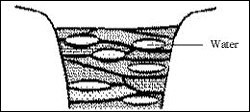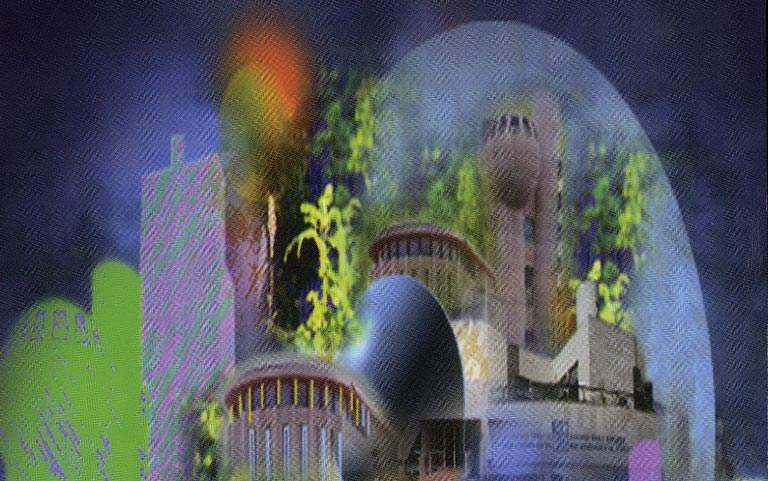In the Middle East, where fresh water has always been scarce, protecting and enhancing the water supply takes on added urgency.
Institute scientists have analyzed local aquifers and developed water-protection and purification systems applicable world-wide.
Disinfection of sewage water through an Institute-devised solar energy technique is being tested at a pilot plant in Israel. An Institute-developed device provides early warning of groundwater pollution and makes possible the effective monitoring of clean-up operations.
Improved cloud seeding materials may one day increase local rainfall. And an inexpensive cake-filtration process for softening water leaves behind no polluting residues.
- Plants that reject a high-salt diet
- Secret water supplies
- Pollution-free water softener
- What's in the water?
- Here comes the rain
Environmental Sciences
Safety first
Weizmann Institute of Science chemists are helping to improve industrial safety by developing alternatives to heavy materials, carcinogens and volatile substances emitted into the environment. These new alternatives are used to produce various polymers which are used, for example, to create ion-exchange membranes in water desalination systems.
Where does the carbon dioxide go?
Weizmann Institute scientists developed a new approach to measure how fast vegetation consumes carbon dioxide. The approach enables researchers to distinguish between carbon dioxide actually absorbed within plants by photosynthesis, and the amount emitted in respiratory processes from the plants and soil.
The new approach is based on measuring the relationship between two isotopes of oxygen found in carbon dioxide in the air (Oxygen-16 and Oxygen-18). The relationship between these two isotopes depends, among other things, on the rate at which the gas is exchanged between the plant and the atmosphere. The greater the amount of carbon dioxide absorbed and assimilated by the plant, the greater the concentration of the heavier isotope (Oxygen-18) in the carbon dioxide in the air above it.
Results received from such measurements will be incorporated into computer models and should help researchers understand the changes in carbon balance in the atmosphere that can lead to the greenhouse effect and climate change.
Protecting and Conserving Water
Plants that reject a high-salt diet

Weizmann Institute scientists discovered that plants which are successfully rooted to the Dead Sea shore do not extract the water vital to them from their excessively saline immediate surroundings. Instead, they extract only the flood water occasionally arriving from the Judean Hills. This finding suggests that the plants are able to distinguish between the salty water and the flood waters.
How the plants identify the desired water is not yet fully understood but when it is, this process will perhaps enable the development of plants especially adapted to survive in difficult conditions like those along the shore of the Dead Sea.
Secret water supplies
In specific areas of the Arava desert, deep inside the earth, there are underground pockets of water similar to oil traps. This discovery, by Weizmann Institute scientists, is considered to be significant: Ground water in geological traps, resembling a bubble with nothing entering or leaving it, will neither be contaminated nor damaged as a result of environmental pollutants. The water pockets can therefore serve as emergency reservoirs.
Pollution-free water softener
When hard water (containing calcium minerals) flows through pipes, salts and minerals are deposited on the pipe walls. This can build up and restrict the flow. Industrial plants, municipal waterworks and private homes throughout the world try to overcome this phenomenon with water softening equipment that removes the calcium from the water. However, the softening substances sometimes damage the water quality. To overcome this problem, Weizmann Institute scientists developed a filter method that traps calcium salts without releasing pollutants into the environment.
What's in the water?
Weizmann Institute scientists developed a method to examine the content of ground, reservoir, and lake water. This method is based on the use of a multilayer tester that includes dozens (sometimes hundreds) of separate cells, each one covered by a semipermeable membrane. Thus, every cell tests the pollution at a different depth.
This system has already been used to evaluate pollution trends in different aquifers in Israel and elsewhere. The system can function with relatively small samples of water: This allows it to reveal contaminants at an early stage when it is still possible to stop the pollution and prevent destruction of the aquifer.
Weizmann scientists used this method to study the Dead Sea and the Sea of Galilee. These studies greatly contributed to knowledge about the chemistry of these waters and supplied information regarding pollution sources and salt content.
Here comes the rain
Arid countries sometimes use ice seeders to increase rainfall. The technique is based on the fact that although ice becomes water when it reaches a temperature of 0°Celsius (32°Fahrenheit), water can exist at less than -20°C (-4°F) and even -40°C (-40°F) without it turning into ice. In order for rain to fall, ice crystals must form in the water vapor in clouds. These crystals descend (due to their relatively high weight) and while doing so, melt, turning into rain drops. However, when the cloud vapor cools without ice crystals being formed, no rain falls.
To increase rainfall, it is possible to seed clouds with different materials to accelerate the formation of ice crystals. Today, the most widely-used ice seeder is silver iodide which freezes water vapor at a temperature of less than -8°C (-17.6°F). Now Weizmann Institute scientists have identified materials that may be used to accelerate the creation of ice crystals at higher temperatures. The scientists discovered that some long-chain alcohols freeze water vapor at a temperature higher than -8°C.
The scientists found that the length of an alcohol molecule and its pairing or nonpairing (determined by the number of carbon atoms in it), fulfill a decisive role in its ability to freeze water vapor. The longer the alcohol carbon chains, the higher the temperature at which it freezes water. In addition, nonpaired alcohols can freeze water at temperatures just below 0°C, while paired alcohol can freeze it at -8°C.






















